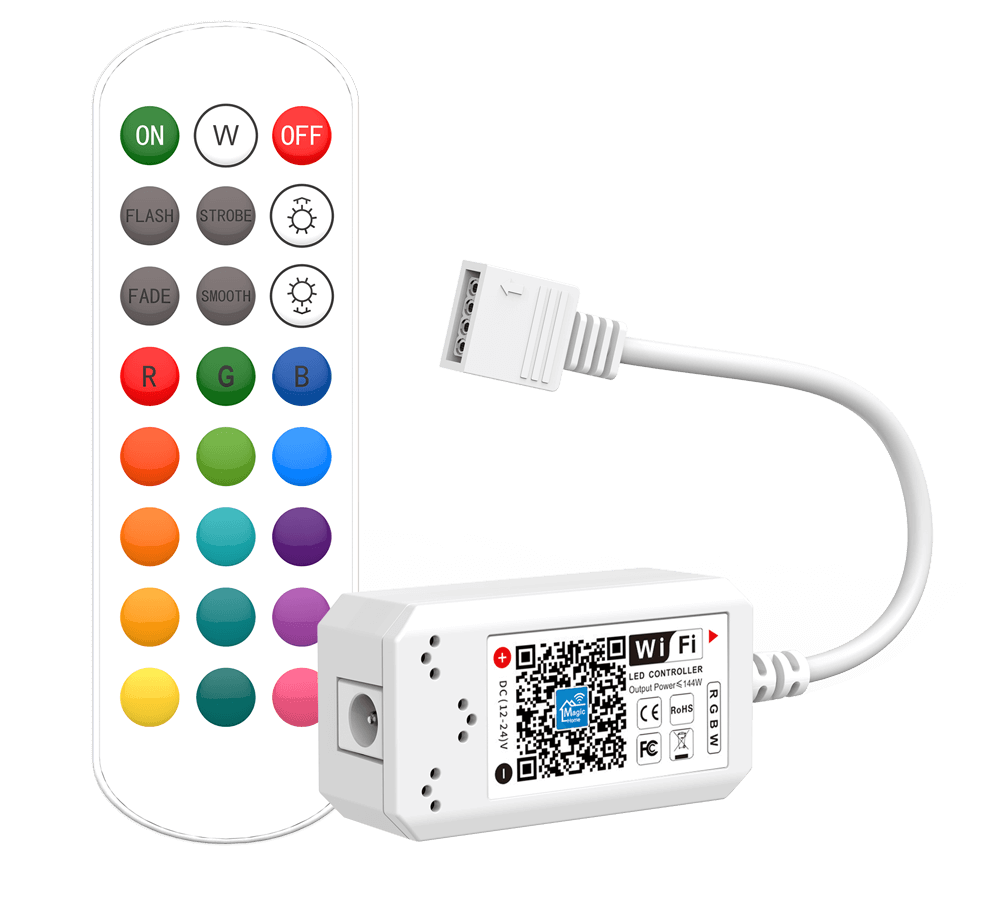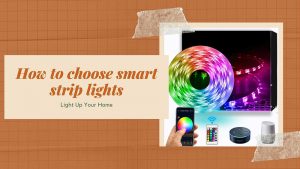RGB LED lighting has exploded in popularity in recent years. With the ability to produce any color, RGB LEDs open up limitless possibilities to create stunning lighting effects for your home or business. But to truly unlock the full potential of your RGB LED lights, you need an effective controller – and WiFi LED controllers provide the most convenient and customizable control.

Table of Contents
ToggleWhat is an RGB LED Controller?
An RGB LED controller is a device that controls RGB lighting by independently adjusting the intensity of the red, green, and blue LEDs to create any color. The controller allows you to change colors, create color-changing effects like fades and transitions, and program lighting themes and scenes.
Controllers come in various forms:
- Remote control: A simple infrared or RF remote allows basic wireless control of your RGB LEDs. However, the remote has limited range.
- Wired controller: Directly connected to the lights through cables, wired controllers offer responsive control but lack the wireless convenience of remotes.
- WiFi controller: Connects to your WiFi network to allow control from smartphones and voice assistants. Offers the most flexible and customizable lighting control.

Why Choose a WiFi RGB LED Controller?
WiFi controllers unlock the full potential of your RGB LED lighting in several key ways:
Wireless Convenience
WiFi control allows you to control your lighting from anywhere using your smartphone or tablet. No need for line-of-sight like IR remotes. As long as you have a WiFi connection, you can change colors, dimness, effects, etc from anywhere in your home.
Expanded Range
WiFi has a far greater range than IR or RF remotes, which are limited to about 30 feet. A WiFi controller can control lights up to 100 feet away or more, covering your entire home or office space.
Scheduling and Automation
Many WiFi controllers integrate with smart home platforms like Alexa, Google Assistant, and SmartThings. This allows voice control and setting schedules, timers, automatic color changing based on time of day, etc.
Advanced Effects and Customization
Apps for WiFi controllers provide more advanced effects like music synchronization, scene selection, color loop creation, and more. You can save custom presets and themes for endless lighting possibilities.
Control Multiple Zones
With a WiFi controller, you can control RGB zones throughout a large space like an entire house, synchronizing colors and effects between areas. Remotes are limited to one zone.
Key Features to Look for in a WiFi RGB Controller
Smart Home Integration
Choose a WiFi controller that works with leading smart home platforms like Amazon Alexa, Google Home, and Apple HomeKit for voice control and automation capabilities.
Brightness and Color Control
At a minimum, an RGB controller should allow setting custom colors and brightness levels. Advanced modes like color loops and music sync take this further.
Zone Control
For larger installations, opt for a controller that can manage multiple discrete RGB zones independently throughout a space.
Effects and Programming
Dynamic built-in effects like color fades, strobes, ripples, breathing, etc. allow for advanced lighting programs. Custom programmability takes it further.
Reliable Wireless Connection
A strong and reliable WiFi connection is essential. Look for extended wireless range and antennas if needed for a robust link.
Top WiFi RGB LED Strip Controller Picks
Based on the above criteria, here are some of the best WiFi RGB LED controllers currently available:
Gledopto Zigbee WiFi Controller
- Pros: Works with Alexa, Google Home & SmartThings hubs; controls thousands of color combinations; schedules, timers, automation
- Cons: Requires a Zigbee hub; no native app control
Ledenet WiFi RGBW Controller
- Pros: App and voice control; bright 5-zone control; color mixing, music sync, themes
- Cons: Setup can be tricky; the app needs improvement
Magic Home Pro WiFi Controller
- Pros: User-friendly app with tons of effects; affordable price; a good range
- Cons: No native smart home integration; requires separate IR remote
Philips Hue Hub and Lightstrip
- Pros: Seamless smart home integration; robust app with automation; high quality
- Cons: Philips Hue ecosystem is expensive; hub required
Get Creative with Wireless RGB Lighting Control
A WiFi LED controller opens up a whole new world of dynamic and customizable lighting capabilities for your unique needs and vision. Ditch the limitations of manual switches, remote controls, and wired connections. With the wireless app and voice control of your RGB lighting, you can easily set any mood or atmosphere, schedule automated changes throughout the day, sync lighting to music, and explore countless colors and effects. The lighting possibilities are endless.
Related Articles



